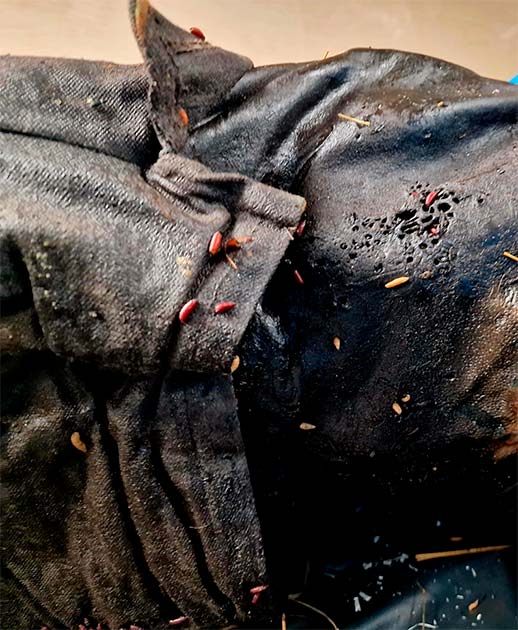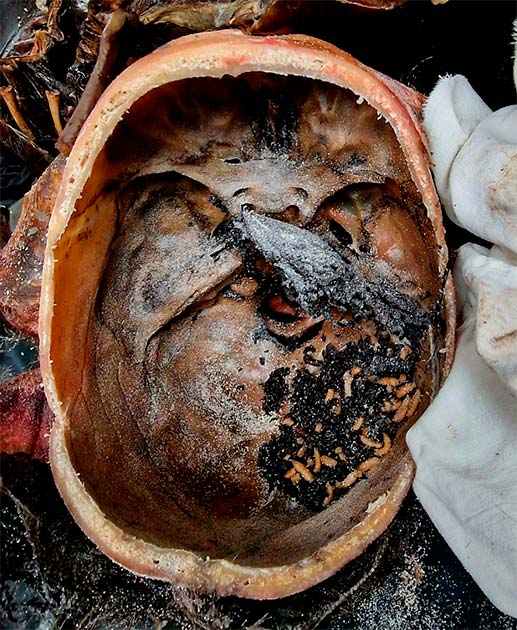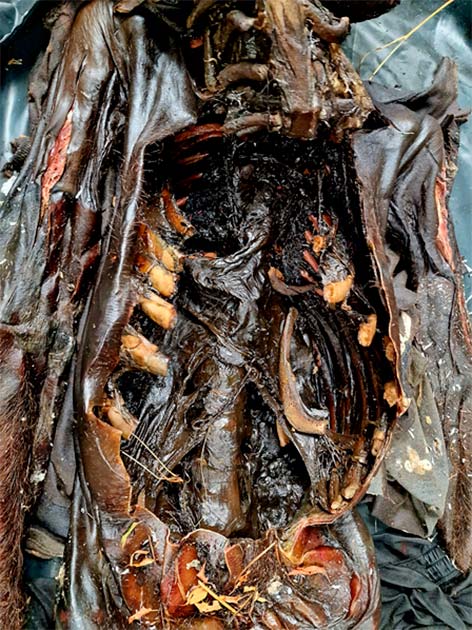
Man Discovered Mummified After 16 Days: Bulgarian Scientists Perplexed
Investigators in Bulgaria have been perplexed after finding “a complete mummified corpse,” just 16 days after the man was last seen alive. Sherlock once said, "Once you eliminate the impossible, whatever remains, no matter how improbable, must be the truth," and in this case, his adage fits perfectly.
WARNING: Some people may find the following images disturbing
The 34-year-old man was last seen alive on 16 August, in the city of Sofia, Bulgaria. Then, on 3 September, his “mummified” body was discovered lying beside a railway line. With a history of alcoholism, one might expect the man’s organs to be a little pickled, but a report published in Cureus Journal shows his insides were “reduced to structureless masses”.
The researchers write that the natural mummification happened over one month, in a process known as “precocious mummification.” But this is rarely observed in temperate regions. Therefore, this case is of the greatest importance for the forensic community, as only a handful of similar incidents have ever been reported. However, the investigators have struggled to account for the body’s advanced state of mummification that occurred so rapidly, in a particularly non-suitable environment.
Mummification, and the Journey of Ka
Mummification is the intricate, and deeply-sacred, ancient practice of preserving human and animal bodies. In ancient Egypt the process involved carefully removing internal organs and drying the body with natron, a salt mixture. Brains were generally removed through the nose and discarded, but hearts were left intact as they were believed to hold the “Ka,” or essential life force of the individual, which left the body and journeyed into the afterlife.

The meticulous process of mummification practiced by ancient cultures to prepare the deceased for the afterlife. (© Nikola Nevenov / Nature)
After several weeks of drying, bodies were anointed with oils and wrapped in linen bandages. Not only does mummification blend spirituality and cultural beliefs, but it stands testimony to the remarkable anatomical knowledge of ancient cultures. The natural mummification of bodies in the ancient world occurred most often in arid regions, where the environment naturally dried and preserved bodies, like in parts of South America and Asia.
- Students Find A Mummy In A Temple, Beneath A Peruvian Trash Site
- Further Tales of the Family of the Iceman Come to Light

The mummy’s preserved skin in the pelvic region displays circular lesions caused by maggots. (Mileva B, Tsranchev I, Georgieva M, et al. /CC-BY 4.0)
Hard, Leathery, Dark Brown Skin of mummified corpse
The team of investigating scientists reported that the man’s skin surface shows “coloration ranging from light to dark brown.” Furthermore, they said the skin texture was “hard and leathery,” and completely dehydrated. Internal examinations revealed that the cranial, thoracic, and abdominal cavities had decayed into “dried, brownish-black masses.”

Maggots can be seen on the inside of the mummified man’s skull. (Mileva B, Tsranchev I, Georgieva M, et al. /CC-BY 4.0)
The investigators write that natural mummification “usually takes several weeks to 6-12 months,” and they added that “such a fast transformation would only normally happen in extreme heat.” However, around the time the body was discovered, Sofia had temperatures ranging from 16 to 33 degrees Celsius, which the scientists said “is not hot enough to have caused the mummification”.

In ancient mummification internal organs were removed. Here, the mummified corpse shows structureless masses in the abdominal cavity decomposed. (Mileva B, Tsranchev I, Georgieva M, et al. /CC-BY 4.0)
It’s Time to Call in Sherlock
The researchers are adamant that the weather patterns in Sofia could not have caused what they describe as a “bizarrely fast mummification process,” as is presented in the corpse of the 34-year-old man.
Employing the earlier method of Sherlock Holmes, if it wasn’t the weather that caused the rapid mummification, it could only have been some other factor that warms up the localized environment where the body was recovered? This approach to the mystery renders the train itself, as the prime suspect.
We have all stood beside train lines, and in subway stations, and experienced the whoosh of warm air that occurs when trains pass. Now while this may sound a little ‘improbable’, and the researchers cannot be sure, they speculate that perhaps passing trains caused warm air and wind to engulf the body enough to dehydrate it, and causing the mummification process to manifest more rapidly.
- Mermaid Mummy at Japan Temple Exposed as Gruesome Man-Made Hoax
- Mummified “Mermaid” CT Scanned by Japanese Scientists
The Argument for Locomotive Mummification?
If it was indeed the passing of warm air that caused the man’s body to mummify, this should prompt archaeologists to readdress mummification sites in ancient Egypt, and in other countries. Embalming workshops and designated temples were often equipped with ventilation shafts, which are generally considered as having been used for managing odors and ensuring clean air in the workspaces.
But considering how rapidly a flow of warm air ‘could’ dehydrate a body, evident in the discovery of the man’s mummified body in Bulgaria, perhaps some of the ancient air shafts were used to speed up the dehydration of bodies, in a process which would rightfully be called “locomotive mummification”.
Top image: This man underwent complete mummification in just over 16 days. His mummified corpse was found near a railway in Bulgaria leaving scientists perplexed about this quick natural mummification. Source: Mileva B, Tsranchev I, Georgieva M, et al. /CC-BY 4.0
By Ashley Cowie















